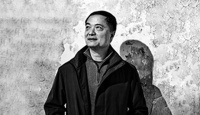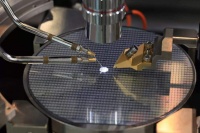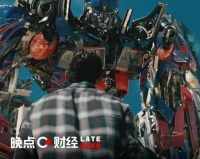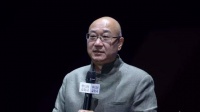和自动驾驶大佬聊聊:谷歌、特斯拉、滴滴自动驾驶哪家强?
编者按:本文来自微信公众号“DannyData小丹尼”(ID:dannyteam),作者 小丹尼,36氪经授权发布。
小丹尼:
我们邀请到了David,David和Emma是剑桥的校友是吧?但是其实一个科技一个人文对吧?David你可以跟大家做一个自我介绍吗?
We've got David today. David and Emma are Cambridge alumni, right? But one majored in sciences and the other in the arts. David, can you introduce yourself?
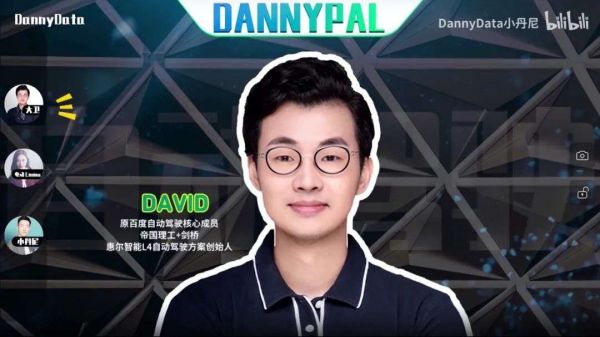
David:
大家好,我叫大卫,目前来说就在做这家自动驾驶公司,所以属于all in的一个状态,之前在百度有过三年的经验,再之前就在英国待了六七年,但是我一直学的是理科,材料科学,所以后续转到自动驾驶这个方向也是一个不小的跳跃。
Hello, my name is David, I am currently working at this automated driving company in an "all in" state. I worked at Baidu for three years, and before that I stayed in the United Kingdom for six or seven years. Materials science had been my major in those years, and so the redirection to automated driving is also a big leap for me.
但是技术一直都是在跳跃的,所以没有人说大学学什么,最后的技术一定就是那样。反正做自己喜欢的事情就好了,因为我觉得热情才是真正推动大家往前走的一个动力,而不是说你学了什么,出发成本,其实在后续很容易就被补上。
Anyway, the technology is always changing, so no one said what to study in university is useful in technology.Anyway, to do what you want to do because I think enthusiasm rather than what you have learned is the one that really pushes everyone forward and the starting cost is actually easily compensated in the follow-up.
小丹尼:
我觉得大家应该都很熟悉Emma,Emma要不要跟大家说两句。
I think our audience should all be familiar with Emma. Would Emma like to say a few words?

电动Emma:
我其实之前是读文科的,但是我一直对于汽车行业很感兴趣。我本来最感兴趣的就是电动汽车,然后你会发现所有的新势力的电动汽车,比如说特斯拉、蔚来、小鹏,他们都会不约而同地把很大的精力放在自动驾驶这一块。
我的了解其实电动汽车在做自动驾驶方面是有天然的优势的,因为它没有延时性,所以不是说燃油车不能做自动驾驶,只是电动汽车会有天然的优势。也是因为这个,我特别关心电动汽车和自动驾驶的关系。
I was actually a liberal arts student but I was most interested in electric cars. And then I find all this new power of the EVs, all coincidentally, have been putting a lot of effort into the automated driving field. And because of that, I'm particularly concerned about the relationship between EVs and automated driving.
今天也想问问David,比如说像自动驾驶,其实有各种各样的公司都在做,传统车企、新造车势力,还有像谷歌、苹果这种科技公司、Uber滴滴这种网约车的巨头,到底这种不同的公司做自动驾驶有什么不一样,有什么优劣势?
And I also want to ask David that, there are many companies have been involved in the development of automated driving, both traditional car companies and new car-making forces, and, for example, tech companies like Google and Apple, and transportation network companies like Uber and Didi. What is the difference between these companies in respect of automated driving, what are their strengths and weaknesses?
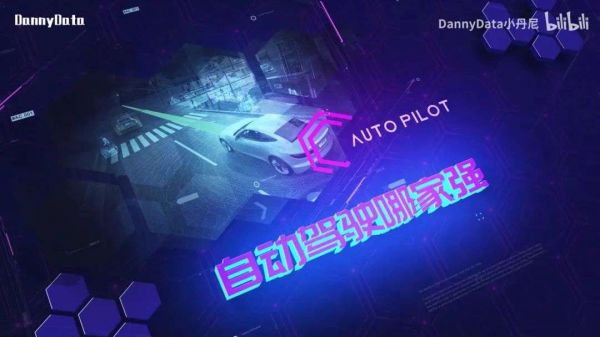
01 生意的本质:各类公司到底在做什么
The core of the business: what are companies doing
David:
Ok,其实我们就要回到这个生意的本质,就是说这些公司在干什么?
Ok. To know that, we need to go back and see what's the core of the business. Or what are they doing?
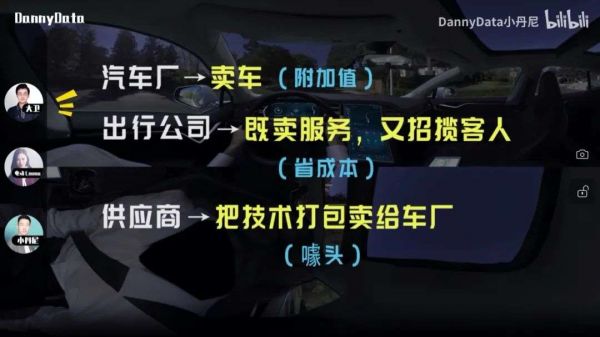
很显然我们看传统的汽车厂,包括这种不传统的,像特斯拉,它也是汽车厂,他的终极目标并不是说我要做自动驾驶,而是我要卖车,所以自动驾驶恰巧作为他卖车当中一个最大的附加值,所以他要把这件事情做好,同时把他的车卖好。
Clearly, the traditional car companies including non-tranditional car companies like Tesla, at the end they sell cars. That is to say, their ultimate goal is not developing automated driving but to sell their cars. And automated driving happens to have the greatest added value when selling cars. So they will develop the automated driving well and sell their cars well at the same time.
我们再回到像滴滴这样的出行公司,他这个生意模式是又要卖服务,又要不断招揽客人,那么我们就要看他现在的模式。Uber也好,中国的滴滴也好,是不是本身就赚钱,首先是打一个问号。因为这种商业模式就有点像所有共享类的,你两边都要招揽客人。所谓的第一波客人就是去消费的,另一波就是开车的。
We come back to see companies like Didi, also known as express traveling companies. Their business model is to provide services and attract more customers. It's still a question that does it make money? Because this kind of business model is a bit like sharing, you have to invite customers on both sides. Your first customers are those who will serve the other half of your customers.
这个模式本身是有点问题的,可能我们一会才会谈到为什么有问题。但是对于这样的公司来说,它的终极目标是省它的成本,我们就要看这一台自动驾驶的车和现在一个美国的Uber司机,他之间的成本关系是什么样子?
This business model is problematic. Maybe we will talk about it later. But for such a company, their current business model, including Uber and Didi in China, their ultimate goal is to save costs. Then we need to figure out the cost relationship between an automated driving car and a US local driver.
我们再来评价技术到底能不能落地。还有一类厂商是像传统的Tier1供应商,像博世、德尔福、日本的电装,还有麦格纳。他们要做什么事情?他们实际上就是要把这些技术分梯度地打包卖给车厂,让车厂不断有噱头去卖车,但是他们会不会把这个技术做到非常完美再卖出去?不会。
因为他们的目标就是把这个东西当成像传统的ABS,像各种我们听过的卖车的时候给你推荐的这些技术一样,一点一点地卖给你。所以这个技术本身是一点一点递进的,这就符合资本家的生意头脑,就是我有一个好东西打成8段,8段分别卖给你就是8年。所以实际上在自动驾驶真正落地的过程中,会有三类不同的模式。
We'll then evaluate whether the technology can be implemented or not. And there's another category of vendors that are the traditional Tier 1 providers, like Bosch, the Delphi, Denso Japan, and Magna. What they're trying to do? They're actually trying to sell the packaged subgradiented technologies to the OEMs so that they keep having gimmicks to sell cars, but will they perfect the technology before selling it?
They won't. Because their goal is to treat this as like the traditional ABS, like the various recommended techs that we've heard when they selling a car. These technologies are sold to you bit by bit as well, and the technology itself is also incremental bit by bit, which fits in with the capitalists' business sense.
And this is like, I have a good thing broken into 8 sections, and they are sold to you separately in 8 years, that's what it is. So actually there will be three different types of business models as the automated driving actually be implemented.
还有别的类似滴滴这样的,也是做垂直服务的,但不是无人出租车,可能是港口,可能是物流,还可能是更细分的一个项目,最近有一个公司在国内做矿车的自动驾驶,它实际上就是省去一个司机在矿区的工资。
在一个偏远地区给工资,还要加各种的附加钱,那么把自动驾驶装到附加值当中,说不定能替换掉一个司机,这个事情就值得做。 所以本质上还是跟滴滴一样的模式,就是能不能省掉司机的钱,这笔账能不能算得回来。
There is other companies like Didi to do vertical service, but it is not a driverless taxi, it may be in port or logistics. Also, it may be a more subdivided project. Recently, there is a company doing autonomous driving of mine cars which actually saves a driver’s salary.
So if he says need to pay wages adding various additional money as standard in remote areas, then it is worthwhile to install autonomous driving into the added value to replace a driver. So, it's no different from Didi's business model in essence. That is, whether the driver's money can be saved, and whether this account can be calculated back.
小丹尼:
对,我刚刚听David主要分析的像这些 Uber、滴滴,都是汽车的运营公司对吧?其实现在在做自动驾驶的,除了运营公司,还包括一些汽车厂,传统汽车厂,还有包括新势力。另外还有一大类就是科技公司,就像Google的Waymo,还有通用它也单出了一块像Cruise。
这几个阵营,它们实现的技术方案也完全不同。特斯拉是以视觉为主导的,其他的可能以激光雷达为主打。像这几个阵营的话,David我不知道从你的角度,一个从业者来看的话,你觉得是哪条道路更走得通呢?
Right. David just talked about various groups, like Uber and Didi, some traditional car companies, and also tech companies like Google's Waymo. So for these groups. they all have different implementation plan. David, I'd like to know, from your professional perspective, which way may be more promising?

David:
肯定是回到轻资产的模式。我们先看湾区的这些公司为什么能有如此之高的利润率,是它的边界特别宽,就是说他同样是一群工程师坐在办公室,它的产品边界是一下子看不太清楚的,是可以不断拓宽的,也就是说它的Margin是非常高的。
比如说Google的工程师,Facebook的工程师,谷歌和Facebook的产品滚到哪里,哪里就可以赚钱,而不是传统的车厂的硬件模式。因为车厂同样上一批人做硬件,硬件淘汰了这批人还是要重新再做一批硬件,所以它永远是周而复始,它的利润率不会特别高。但是湾区的这些互联网公司它的模式是很强的。
I believe to come back to the light-assets mode. We're looking first at why these companies in the Bay Area have such high profit margins.
This is because of the boundaries of the product are particularly wide not clear all at one glace, and they are constantly widenable, meaning that their margin is very high. For example, engineers at Google or Facebook, they makes money wherever their products go, and this is their business model, not like that of the traditional OEM's hardware model.
Because the OEM has the same batch of people to produce hardware, and when the hardware is outdated, the same batch of people are going to make another batch of hardware. So it It will always be week after week after week, and it won't be particularly profitable. But these internet companies in the Bay Area has very strong business model.
我们就看如果要想变成非常高利润率的公司,现在在自动驾驶当中,Waymo可能是往这个方向走得最对的,因为它是纯做系统的,包括它的硬件也是为了扶持它的系统的。它不会跟车厂走得特别近,说我把这个技术就给到车厂,签一个什么战略合作,你用我的技术,绝对不可能。他有没有可能自己做运营这么重的事情?也没有可能。因为做运营是非常累的,是一个搬砖伺候人的活,对吧?
Let’s see if we want to become a very high-margin company. In the current automated driving business, Waymo may be the most right one for it only develops system and the supported hardware.
It will not get too close to car companies. Let's say sell its tech to car companies or signing for a strategic cooperation plan, and you can use my technology. Definitely not. Will it be possible for Google to operate the business itself? No. Since operating is quite laborious, like a servant right?
那还是回到Tesla。我们还是要记住Tesla最终是一家汽车公司,是以卖车为目的的。他现在做这个技术也可以完全是自己做,将来有没有可能有Tier1供应商和他一起做?也有可能,也有可能中间有芯片厂帮他一起做。但像 Google这样的公司有没有可能?不可能。他一定是把自己的系统做得很封闭,然后它滚到哪里,哪里就是它的商业版图,哪里就可以赚钱。
So we come to Tesla. Tesla needs to sell its cars, and we need to keep in mind that Tesla is a car company and its aim is selling cars. At present, it can develops the automated driving tech by itself, but it may also cooperate with other Tier 1 vendors in the future.
And there might be some chipmakers come back and assist its work. But not Google. Google won't do that. It must develop a very closed system, and wherever it moves, there is its business field and its source of profits.
电动Emma:
我就想八卦一下,比如说现在谷歌的一辆无人驾驶车,它要造出来它的成本要多少?因为我们一直在说自动驾驶的车成本是不是能够低于一个司机,所以我就很想知道。
I want to ask that how much will it cost for Google to build up an automated driving car? We keep talking about whether the cost can be lower than a driver. So I really want to know.
David:
其实你这个问题要拆一下。我的理解是它的BOM是不是低于一个司机,而不包括它软件上的庞大的队伍。这个BOM,我自己看了一下,我觉得是跟一个司机两年的工资差不多的,差不多在10万多,我们按美国来算,10来万美金。
它的激光雷达,加上其他的传感器,因为它所有东西都是自己造的,我们也很难说按照市场价估一个价格。但是像Cruise和 Uber ATG做的产品,我们是可以按照市场价做一个breakdown,然后把它的BOM拿出来看多少钱的。但是Waymo确实很难一下子说有多少钱,但是十几万美金是必须要拿下来的。
This question can be divided into several parts. According to my understanding, the focus is whether the BOM cost is lower than a driver rather than the big team. Its BOM, as I read, is about twice of a driver's annual salary, around $10,000.
Taking the US as an example, $10,000 includes the cost of its lidar and other sensors. Well, since it builds up everything by its own, so it's hard to estimate the cost at market price. But with products like Cruise and Uber ATG, we can do a breakdown at market price and then take out the BOM to see how much it costs.
But Waymo is really hard to say at once how much it cost. Somehow the cost has to be limited within several hundreds of thousands of dollars.
小丹尼:
它的激光雷达还是非常贵的,像Waymo那套方案。
The lidar is still very expensive, like that of Waymo's solution.
David:
但是上量之后,激光雷达的成本也在往下降。但是为什么总体价格是这么贵?因为可能所有的零件都要它自己去搞,搞成一个系统,这个价格就上去了。如果只是做某一块,只是做个摄像头,或者说一个芯片方案,这个上量之后会非常便宜。
But after it's increased, the cost of lidar is also going down. But the reason why it's so expensive is because he may have to make all the parts by himself for a system. If only to make a certain piece like a camera or a chip program, the volume goes up and price will be cheap.
小丹尼:
据说是不是这两年激光雷达的价格差不多也砍了一半了?
It seems that the price of lidar has been cut by about half in the past two years?
David:
激光雷达也分,实际上这个领域都可以单独做一个课题给大家讲。现在的激光雷达实际上都是我们叫mechanical的,基于TOF(机械飞行时间)的原理。如果是说固态雷达,成本还是非常高的,所以大部分自动驾驶公司现在还在用机械旋转式雷达。
从当年Velodyne的老板 David,他也叫David,是非常厉害的一个发明家,他把机械旋转式雷达推向世界,这已经10来年了,大家还是在大部分采用这种方法,尤其是在无人出租车细分领域,或者说在做出行服务的领域的自动驾驶。
Lidar also has different types, which can be presented as another topic. The current lidars are all mechanical, and the basic principle is TOF (time of flight). It is very expensive to apply a solid-state radar, so most automated driving companies are still using mechanical rotary radars.
This kind of radar was introduced to the world by Velodyne's owner at the time, who was a brilliant inventor also called David. Now, ten years have passed, the radar is still popular among most manufacturers, especially in the field of unmanned taxi segment, or automated driving in traveling services.
还没有说哪家公司真的能把固态雷达加视觉,就是很多别的更高级的方法揉到这么低成本的,实际上更高级的方法,各个公司也都在不断地探讨,像最近CV界又推出了很多算法,很多新的激光雷达的功能,但是有没有可能说做到这么低成本?这是一个时间问题,暂时还是没有的。
At present, no company is able to combine various advanced technologies at a low cost, such as solid-state radar with vision. These more advanced technical methods are constantly being studied by companies.
For example, many algorithms and new lidar functions are developed in the CV (computer vision) field recently. However, is it possible to keep the cost low? It is actually a matter of time, and temporarily the answer is no.
但是现在还是机械雷达加视觉摄像头加毫米波,这样的多传感器融合的方案在上,但是这个方案就需要你后续还要有高精地图作为辅助,所以还有很多事情,所以成本降不下来也是在于它还需要高精地图的配合,而不是像特斯拉这样,出厂装个摄像头,装上一个hardware,然后后续就不管了,对吧?不是这样的。
At present, a multi-sensor fusion solution that equips mechanical radar with a visual camera and millimeter-wave is given priority, but it requires HD maps as an assistant, so there is still much to do.
The HD maps also contribute to the high cost. You can’t be like Tesla who just installs the camera and the hardware and leave it aside without follow-up actions, right? It’s not going to work.
02 自动驾驶会在哪些领域先有突破?
In which areas will automated driving first make breakthrough?
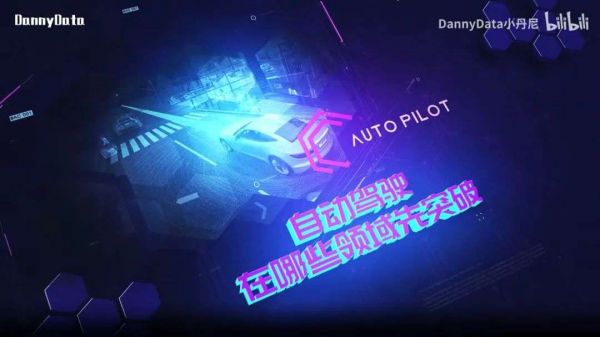
小丹尼:
是的,现在大概自动驾驶的发展阶段在 L2和L3之间,这个是主要的一些车厂,包括这些科技公司。像谷歌它直接就研发这L4,但离使用还是有一定距离。我觉得哪怕现在自动驾驶的发展阶段相比之前已经进步很快,但在市面上还是有很多人对这个技术是非常怀疑的,对吧?
尤其是让一个普通消费者能真正想要去坐到自动驾驶车上,其实心理门槛还是有的,对吧?我想问在自动驾驶应用领域方面,你觉得在哪些领域可以有一个比较可能的最先突破?
Yes, the development stage of autonomous driving is currently between L2 and L3 for these main car manufacturers and technology companies. There are some like Google that develops the L4 directly but it may still be a certain distance away from actually use. The public is still skeptical about this technology, right?
The ordinary consumers still have to overcome a great psychological barrier to really enjoy a self-driving car, right? So my question is, where do you think autonomous driving can first make a breakthrough in terms of application?
David:
这个问题蛮好的,实际上最先突破的应该是在已经能替换人的这些领域,比如说在封闭领域,就是说这个车的行驶是个相对封闭的领域。因为这里面的不确定性没有那么多。你这个场景当中的外来车辆也好,外来的人流也好,还有整个地图的大小都是可控的,所以这个是可以最先落地的。
Good question. Breakthroughs should first occur where human beings can already be replaced. For example, the closed field of driving, because there is less uncertainty. The vehicles in the scene, the flow of people, and even the size of the map are all controllable. Therefore, this will be the first place where automated driving can be put into operation.
比如说在一个主题公园,我们要做一个酒店和主题公园之间的接驳服务,(电动Emma:摆渡车),这种就很容易被自动驾驶逐渐替换掉。但你说要在一个 highway上或者城市主干道上实现,还有很长的路要走。
Let’s take a theme park as an example. The shuttle service between the hotel and the theme park, (Emma: shuttle bus), is easy to be replaced by autonomous driving, but if it is on a highway or city main road, there is still a long way to go for automated driving.
电动Emma:
城市主干道我能想到的一个场景就是低速的,而且那个时间段是比较少人的,比如说那种扫地车。
One of the scene on the city main road I might think of is to drive at a low-speed and during the period of a relatively small traffic volume, such as the street-sweeping car.
David:
对,这个是我们觉得最能很快上路的,就是这种沿着路牙子扫街的。
Yes. The sweepers along the street are what we think will be first on the road.
电动Emma:
没错,又低速的。
And at a low speed.
David:
对,但是这个领域把它完全归为无人驾驶,还有一点点打擦边球。因为其实SAE,美国汽车工程师协会,在定义无人驾驶的时候,这个车本身要作为人的载具,而不能作为一个功能性载具。什么意思?就是说你这个车如果是拉集装箱的,实际上不在它从L1到L5的定义范围内。
这个是业内很多人忽略的一点,就是说我们做的技术是L几,然后给什么做的。给港口做的,实际上不在SAE的定义范围内。它这个定义是说我们人要坐在车上,然后从L0到L5完全撒把不管了。如果拿来做扫地或者拿来做矿区港口的应用,不太适用这个方法。但是大家习惯上是喜欢拿 L几的概念过来套,因为这样更好理解。
Yes, but actually, it is not accurate to view it as an application of automated driving. When SAE (Society of Automotive Engineers) defines automated driving, it requires that the car should be used for human beings instead of a functional one. What does it mean? That is, if the automation is for a truck to ship containers, it is not within the definition range of automated driving from L1 to L5.
This is often overlooked by many people in the industry and they only focus on the levels of automated driving, but not on the service objects. In fact, if its service target is a port, it should not be within SAE's definition.
The definition emphasizes having people sit in the vehicles, regardless of what level it is from L0 to L5. So if in sweeping cars or for ports in the mining areas, this kind of "automated driving" does not apply to our topic today. But people are used to the concept of levels because it is easier to understand.
电动Emma:
没错,它其实还是要有一个场景,要跟人是有关的。
Exactly. It needs a scene that is related to people.
David:
对的,一定要作为人的载具,因为所有的安全性都是围着人,对吧?如果是围着一个货,其实不太存在说要不要为货付出太多的安全性保障。
Right. People must be involved, because the security is for people, right? If the service targets are objects, we don’t need to pay too much attention to security guarantee.
03 现在的自动驾驶靠谱吗?
Is the current automated driving reliable?
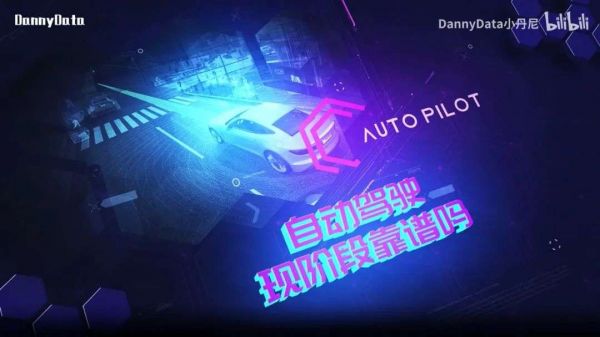
电动Emma:
说到人,我就想问一下,现在我们所谓的自动驾驶,比如说像特斯拉这种,它其实还是半自动驾驶,甚至只是辅助自动驾驶,有的是由人来做,有的是由自动驾驶车来做,这会不会是一个反人性的设计?人和车的分工是不明确的。
Speaking of people, I have another question. Now the so-called automated driving, such as that of Tesla, is actually semi-autonomous, or even just driving-assisted. Part of driving is done by people, part is done by the car. So is it an anti-human design if the division of labor between people and vehicles is unclear.
David:
你这个问题问得很好。我经常在想,一个机器,它如果只能部分替换掉人力,人还是需要对全程有监控的。实际上有没有真的解放人?就是说并没有做到,它只是感官上觉得省力了,但是实际上精神上并没有很省力。
我不知道观众朋友们能不能理解,就是你坐在一个自动驾驶的车上,你还要全程经常去干预、盯着,其实本身也有点累。我们把这个例子举得更贴切一点,就说你们家的洗衣机不能做到全自动,每50秒你要看它一下说大哥你洗不洗?这个洗衣机就亮一下绿灯,说我还在洗。你说这个有没有解放你?这并没有解放你嘛!
The question you asked is very good. I often feel that if a machine only partially replaces the manpower, people still need to monitor the whole process. It does not actually save labors. It just frees our hands, but not brains.
I don’t know if you understand. Imagine yourselves sitting in a self-driving car, you still have to intervene and look ahead absorbedly all the way, which is also energy-consuming. Let’s make it more precisely.
It feels like your washing machine cannot be fully automatic, and you need to check every 50 seconds if it is still working. Then it flashes the green light, telling you that “Oh, I am still washing”. Do you think that you are freed from it? Not at all!
电动Emma:
对,一个是在精力上没有解放,另外在你的精神上也没有完全解放。我以前听过别人说的,坐这种半自动驾驶车是什么样的体验,然后有一个很高赞的回答就是说:有点像别人给你挖耳朵,你感觉是有点爽的,但是其实心里是很担心的,因为你是不确定他 O不 OK。
True dat. It doesn’t save our energy nor mentality. I have heard a saying about how one feels when driving a semi-autonomous car. One of the answers which got the most likes was: It feels like someone is doing ear-cleaning for you, and you feel cool and worried at the same time because you are not sure if your technician can do it well.
David:
这个例子举得太贴切了。
This example is very appropriate.
小丹尼:
是的,而且换一个角度来说,像现在L2级别,如果你撞一个人,这个责任还是在你人身上,不是车的问题,对吧?
Yes, from another side, like the L2 level now, actually, If you hit a person, the responsibility is still on you rather than car, right?
电动Emma:
那不是,你要看是谁。我爸爸撞了我的特斯拉,他已经拿自动驾驶去甩锅了。
It depends. My dad crashed my Tesla, and he put the blame on Autopilot.
David:
但是从法律的规定上,法律是需要一个主体的。
But in terms of the law, the law needs a subject.
小丹尼:
对,像L4的话应该已经达到是车的责任,但是现在的L3还是在模糊的地带。
Yes, like L4, the responsibility is the car, but it's still in a vague area in L3.
David:
对,实际上你这里谈到一个问题,就是主体责任怎么转嫁?我们去年在底特律开了个自动驾驶会,就有人聊到这个问题,他说自动驾驶按目前来说还是很安全的。然后有一个车厂的工程师就说,你怎么能评判你自动驾驶的技术就是安全的?他说我们已经有差不多几百万英里在美国测试了。工程师就说,你这个数跟我们卖车的比,简直是胡扯。
我们一款某某车型卖了10代,在过去50年当中卖了10代。 在这10代当中我们积累的里程和因为这个车受重伤和死掉的人,我们是有一个绝对的数值的,你怎么跟我这个绝对数值比?你这几百万英里在我们看来就是我这个车一年的销售量当中一个portion跑的量。这个时候自动驾驶的方案公司就哑巴了,说要是这么比的话,我没有办法跟你比绝对数值,但我可以跟你比相对的,我在几百万当中没出过事。
Yes, you are talking about a question how to transfer the main responsibility in fact? We held an autopilot meeting in Detroit last year. Some people talked about this issue and said that autonomous driving is still safe as it currently is. Then an engineer from a car factory said, how can you judge that your Autopilot technology is safe and this company has tested autonomous driving for million miles in the United States.
It's nonsense when you compared it with the number of cars we sell. We sold 10 generations of a certain model in the past 50 years. We built an absolute value between accumulated mileage and the number of serious injury and death of this car in the 10 generations. How do you compare with my absolute value?
Your millions of miles are just one portion of my car's annual sales so the autonomous driving company is "dumb" this time. If you like way, I can't compare with absolute value but I can compare with relative value that drive millions of miles safely.
后续保险公司就需要这样的数据去帮他做模型,去转嫁风险。保险公司会相信谁?保险公司这么精,他肯定不会相信自动驾驶公司说的这些话
So that means the follow-up insurance companies need data to help him build the model and transfer risk. Who will the insurance company believe? The insurance company is so sophisticated and it will certainly not believe these words said by the autonomous driving company
小丹尼:
我看去年在加州,包括各个科技公司和车企,它们就搞一个测试,排名比较靠前的就有Waymo,还有中国的小马。
There was a driverless test held in California last year. A lot of car companies and tech companies were in it. Waymo and then Chinese company Pony AI ranked quite high.
David:
百度实际上是比较靠前的。这个测试报告就在我电脑上,其实大家可以从DMV加州的官网下载下来。这个里面很多学问的,因为我的场景可以自己定义,我就围着我们家院子转,然后转了10万公里,然后我的disengagement,就是脱手率就一次,和我绕着旧金山上山下坡,在这么复杂的场景当中经常脱手,这完全不在一个测试可比的范围内。
而DMV的报告实际上在这方面是忽视了,包括它的撞车报告。你可以发现像Waymo和很多公司,它一年出了几十次上百次的事故,但是某些国内企业就没有。那是不是说人家技术不行?不对,人家在最复杂的情况下跑了最多的路段,然后把这个报告公布出来,和你围着你们家后院跑了几万英里,然后就出了一次事,是完全不一样的。
Baidu's ranking is actually relatively high and this report is actually on my computer. In fact, you can download it from DMV California’s official website. This report is worth considering because the scene can be defined by myself.
This is not comparable when I turned around our yard 100,000 kilometers to hand off once and I drove uphill and downhill around San Francisco a complicated scene to hand off frequently. The DMV report actually ignores this aspect, including one of its collision reports, which is the crash report.
You can find companies like Waymo often reported dozens of accidents hundreds of times a year, but some domestic companies are not. Does that mean that those company's technology is not good? It is completely difference between those reported the test in the most complicated situation and others ran tens of thousands of miles around backyard road with an accident.
而且这个撞车报告当中还会写,在哪里,因为什么撞了车,是因为系统的失误还是人,都会写。所以这个东西如果不披露给大家,大家都感官上觉得好像排名怎么样,实际上这个排名在业内并不太具备可比性,因为这个场景不是大家固定的。
除非说我们玩这个游戏是固定,咱就旧金山,对吧,所有人都一样,然后从早上几点到晚上几点,是一个什么状态,这样是可以的,就是控制变量。如果你不控制变量实际上可比性不高。
And the report of the crash is written about why and where and the car crashed, whether it was because of the system or the person so the report is not disclosed. Everyone feels like how important the rankings are. In fact, this ranking is not quite comparable in the industry because this scene is not fixed. Unless we only fix it in San Francisco, right?
Everyone is the same at the same time from morning to the evening with the same state, so it is possible to control the variables. If you do not control the variables, the comparability is actually not high.
电动Emma:
没错。说到这个评判,我刚才看到有一个同学问怎么评判自动驾驶技术水平好坏。我们现在有没有一个比如说什么评比,是专门能够看到哪一个公司做得比较好的?
That's right, when it comes to this judgment, I just saw someone online asking how to judge the level of autonomous driving technology. Do we have one now? For example, what kind of competition can specifically see which company is doing better.
David:
评判的好坏,实际上在美国是不会从国家层面搞一个标准来评比的,包括美国汽车工程师协会,他给的 L几的定义也只是一个定义而已。具体谁家技术好坏,其实就是拿这个,比如说在加州或者在凤凰城的测试报告,我们互相指着对方鼻子说,你看我测试这么久,没怎么出事,你没怎么测试,你还老出事儿。其实就是这样比的。但是像我刚才说的,这里面有很多猫腻的存在,所以没有一个绝对的标准。食品药品有个绝对的bar,摆在那里说你达到这个bar就怎么样,但这个领域起码是没有的。
The judgment? In fact, it is impossible to say a standard can be evaluated at the national level, including the American Society of Automotive Engineers.
The definition of L is only a definition. As for the specific technology, they just take this test report in California or Phoenix and pointed at each other's nose to say, "Look, I've been testing for so long time, nothing happened, and you didn't test much, you still have trouble." But as I said earlier, there are a lot of greasy existences in it, so there is no absolute standard an absolute bar like food and medicine at least.
小丹尼:
现在做自动驾驶的特别多,可能有几百家甚至上千家公司。 我不知道从你的角度来看的话,以后会不会像手机系统或者是电脑系统,最终可能就剩下两三家?你觉得在自动驾驶这一块,会不会也出现这种情况?
There are so many companies working on automated driving now. Currently, it may have hundreds of or even thousands of companies. From your perspective, will the automated driving tech company like the mobile phone or computer system, maybe just two or three company will survive in the future? What are your opinion?Will that happen?
David:
我们回到你说的,为什么操作系统就剩这么几家,是因为它需要一个生态。它的开发者不允许说我同时为10个操作系统来开发一个软件。但是自动驾驶公司大部分我们现在看到的都是full stack,全栈的公司,它不把生态开放给你。
当然也有像百度、阿波罗,还有英伟达的系统,包括日本的一家叫奥特威尔,我们叫三大开源系统,它其实是开源,但是实际上像美国几个主流的自动驾驶公司,它不跟你share的,不跟你共享它的平台的,它是个封闭性的。
Let us recall the reasons why only few operating systems left, as you mentioned earlier. Because it requires an ecosystem, and its developers do not allow me to develop software for ten operating systems simultaneously. However, for most of the autonomous driving companies that we know are called the full-stack company.
It does not open the ecology to you. Of course, there are some systems made by companies like Baidu, Apollo, NVIDIA, and including a Japanese company called Otwell. These three significant comparisons, we call the three major open source systems.
It is open-source. But the mainstream automated driving companies in the United States, they do not share with you or their platform. It is isolated.
所以在这个封闭环境内,实际上不涉及到我吞掉你或你吞掉我,因为谁家也不是太了解谁家,operation system都是自己做的。但在特别底层有一些还是比较像的。我觉得这些巨头,头部企业,最后变成像传统的操作系统一样,不太会。
而且最终一定会变成在垂直领域内有更多的满地开花的公司。而头部做无人出租车的还是这几家,因为他做无人出租车解决的问题,不像我们最早做扫地解决方案,他不一定看得上这个领域,或者说他不一定看得上更细分的这些segment。
Therefore, in this isolated environment, it does not involve that I will merge you, or you will consolidate me because no one knows other operation systems. They are made by themselves. But you mentioned that the bottom layer is the fundamental logic that may be a little bit similar. I don’t think those giants, or we called those leading enterprises.
They will eventually become like traditional operating systems. And in the end, it will have mass companies in the vertical field, but only a few leading enterprises make autonomous taxis. Because the problems of autonomous taxi does not like the sweeping solution we mentioned before. It may not be interested in this field, or it does not want to pay more attention to these subdivided segments.
小丹尼:
我看还有一位同学提的问题,就是你怎么看文远知行在广州的自动驾驶出租车,就是文远知行和高德刚刚推出的。
I also see another question, it's how you think the autonomous driving taxi of WeRide( WeRide and AutoNavi launched together) in Guangzhou.
David:
把对方的公司名字写出来再评价,这种活我一般私底下喜欢干。但是,我们先不说他这家公司怎么样,我们就说Waymo在旧金山湾区运营得怎么样。作为世界顶级头部公司,他也没有办法做到放开让大家去叫车,也是在一个很封闭的环境内,这个环境相对也要可控。他现在是没有安全员了,但是我相信国内目前做不到没有安全员。另外一点就是在运营的时间上有没有设一个坎,各种condition有没有达到?像美国Waymo这样,大部分情况都可以叫这个车,在国内我可以很负责任地说是没有的。
To spell out the name of the company and then evaluate it isn't my favorite style. I prefer to do this kind of thing in private. Let’s talk about how Waymo operates in the San Francisco Bay Area firstly.
As the world's top company, they still don't have driverless taxis. They still need a very closed and relatively controllable environment. Waymo does not have a safety controlled officer, but I believe that this can't happen in China now. Another point is the operation time. Do they set a threshold? Do they meet various conditions? Like Waymo said, this car can be called in most cases. Buts I think it should not be in China definitely.

04 中国VS.美国的自动驾驶技术
China vs. America's automated driving technology
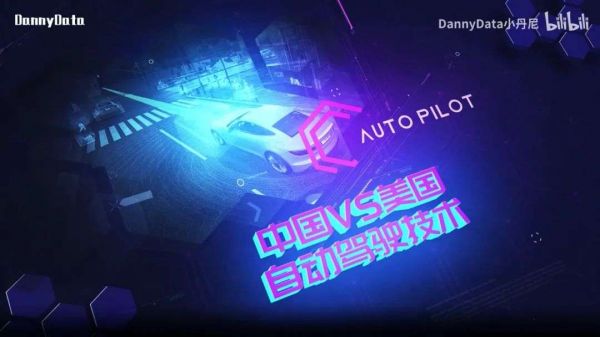
电动Emma:
有一个跨界旅行控同学,他问:所以现在国内自动驾驶和国外的差距在哪?
Now there is a pal who is a fan of cross-border traveling, and he asked about the gap between automated driving in China and foreign countries?
David:
就硬核上来说,跟Waymo还有 Cruise automation,还有另外几家美国公司比,可能在算法上还有一些差距,但是这个算法上实际上是要按时间和里程数不断再去往上提高。这个还好,我觉得这个是需要时间,因为他毕竟做得早,比你在这方面有经验。
但是你说从硬件上来堆,就是说 BOM,倒不一定说两边有多少差距了。因为其实这里的BOM就是供应商,很多都是重叠的,在硬件上的差异并不大,而是在软件和针对这些corner case的处理上,中文叫什么?
If you talk about the hardcore, there are still some gaps in the algorithm when comparing with Waymo, Cruise automation and some other American companies. But the algorithm could be developed by continuing practicing with time and mileage. It's not that crucial. I think in terms of time, because they did it earlier than us, so they have more experience in this area.
If you talk about the hardware, there are not too many differences of BOM between us. Because the BOM means the supplier, most of them are overlapping. So, the difference in hardware is not that big. The difference is when you are dealing with corner cases in software. How to say corner case in Chinese?
电动Emma:
极端的那种。
It describes “Extreme.”
David:
对,在比较极端的方案上。
Yeah, for an extreme case.
电动Emma:
对,这个只是我们说的单车智能。但是,比如说路的复杂性,我们中国是要比外国,我看他们做的报告是说平均要复杂30倍,所以是不是就是说其实国外有天然的优势?
Yes, we were talking about one-car intelligence. However, for example, the complexity of the road. China is more complicated than in other foreign countries. The report said the way in China is about 30 times more complicated than that of other countries. So, does it mean that foreign countries have natural advantages?
David:
实际上我们不能把它简单归为国内和美国,我们要把它划为一个守规矩的地方和一个相对不守规矩的地方,这个地方可以是任何一个地方,可以是泰国或者越南,对不对?
Actually, we can't only classify it as domestic and American. We have to turn it into a place of compliance and an unruly area. This place could be any place; it could be Thailand or Vietnam, right?
电动Emma:
没错,法国巴黎也不行。
That's right, not even Paris, France.
David:
如果是这样的情况下,其实是应该反过来想。在这么难的情况下测,我的耐药性才强。
If in the case, you should think about it the other way around. If we could survive in a difficult situation, our tech should be more reliable.
小丹尼:
我看最近中国一些造车新势力有一种论调,他们觉得像特斯拉或者谷歌的Waymo,它为什么不一定能在中国用起来,可能是它们在中国的高清地图这块做得不够本地化。像这种论调,你觉得靠谱吗?
Recently, some newly emerging car companies claiming that Tesla and Waymo of Google probably won't be applicable in China. And this is because their HD map is not localized enough. How do you think of this statement? Is it reliable?
David:
说对了80%。我们先不说Tesla的视觉方案,高精地图对于自动驾驶,尤其是基于激光雷达的,或者说多传感器融合的方案,是非常需要的,因为做高精地图相当于是另一部分的感知能力提前给你做进来了。
也就是说你在实际上跑的时候,不用你所有的能力都达到满格,而是提前一些特征点已经给你抓取到了,你只要去匹配这个特征点,就能把定位还有感知能力提到另外一个高度,是这么一个原理。那么基于这个原理,是不是有足够大的地图测好给你,还有地图的更新率的问题。比如说在深圳,我就觉得深圳三天两头都在修路,我为这个路辛辛苦苦做了一个高精地图,可能3~4个月,这地方这个路又变了,就不能用了,所以成本就非常高。
80% I guess. The HD map or most visual program are, especially those based on lidar, crucial and necessary. Here, we put Tesla's plan aside for a while. The HD map is like a pre-installed sensor, and this means that when a car operating on the road, it dose not requires a full-set functions since some feature points have been captured with the HD map.
So the car only needs to match the feature points, and in this way, the positioning and perception function will be brought up to a higher level. Then, based on this principle, the large enough measured and up-to-date map is required.
And this is a problem in China, especially the frequency of update. For example, in Shenzhen, I feel like the road changed and upgraded very often. Say if I work hard on a HD map and it’s only 3-4 months later, the roads have been changed. And my work will be in vain. So you can see the cost is pretty high.
另一方面,我在测地图的时候遇到这么多变换的情况,本身就很难做这个图。你说在广州的单行道里面做个地图,周围都是小摊小贩,你说这有多难,对不对?这个太复杂了,所以还是要把它变简单一点。比如说在广州,他们运营的地方就是一个岛,这个场景相对简单,有点像美国Palo Alto,没有这么多不可控的情况。
在这个情况下做一个高精地图,还是可以的。至于说高精地图的成本现在是多少钱,还是相对比较高的。所以在这个方面会导致基于激光雷达多传感器融合的公司,它的成本比Tesla这样的公司高,但是它的可靠性和后续可以升级的地方都要比Tesla的模式更好。
On the other hand, when I measured map, I encountered with this frequent changing problem. This will make the measurement difficult to conduct. And if it is in Guangzhou, the one-way roads are surrounded with hawkers. You can imagine how hard the measurement will be. This is too complicated.
Therefore, it should be simplified. In Guangzhou, they are operating on an island, I guess? This will simplify the situation, which is like the Palo Alto in the US. On the island, there will be much less situations out of control.
So the HD map in this situation is applicable. As for the cost of the HD map now, I’d say it’s expensive. This kind of solution based on multi-sensor fusion, I mean the lidar multi-sensor fusion, will costs more than that of Tesla. But its reliability and subsequent upgradability is better than Tesla's mode.
电动Emma:
所以听你这么说,其实全自动驾驶,就像我妈说真的不用人的,我就在那个车里告诉他,我想去哪个地方,我就能到达的,那种其实还有很长的路。
I heard you. For the full automation, most of the people, like my mother often asks that does it really need no human assistance to do anything? If that come true, I just need to tell the car where I want to go and I will get there. There is still a long way to go to get to this level.
David:
对,首先要问你母亲这个想法,她到底想在哪里用?如果在咱们广州用可能时间还要比较久。如果我们现在重新建了一个城市,比如说在中东土豪国搞了一个城市,从修路开始,我就为自动驾驶把所有的坑都填好了,我的交通灯是可以跟车通信的,我的人行横道上面也有传感器可以跟车通信,所有都打通了,其实就方便很多。
Yes, first of all, you should ask your mother about that idea. Where does she want to use it? It will take a long time to make it happen in Guangzhou. However, if we say that we will now build a new city.
For example, in a Middle Eastern country, we are starting to build this road, we will put everything we need for autonomous driving. The traffic lights can communicate with the car. There are also sensors on the crosswalk that can communicate with the vehicle. All of them are connected. It is much more convenient.
为什么?因为我们大多数时候在算法上和工程上解决的问题,都是针对这些出发成本。你这个城市已经是这个样子了,我要为你解决原来的一些问题,付出的成本是很高的。
而不是说这个技术放在一个新兴城市,基础设施都完全按照我这个标准来做,那样的话落地会更快,实现躺在那儿就能从家到公司这种完全的自动驾驶,是相对容易的。而在中国的这种城市里面,因为本身出发成本是摆在那里的,那就是比较难。
Why? Because most of the problems we solve with algorithms and engineering are what we call the starting cost. Those cities are already like that. I'm going to solve some of the original problems for that, and the cost is very high.
It's not like putting the technology in a newly emerging city, and the infrastructure is entirely following my standards. It's okay. In that case, it will make the full automation happening faster. To achieve the progress that you could do nothing but lie there, you could get your company from your home.
That kind of automatic driving is easier to achieve. In China's current cities, it is more difficult because it means we need to spend a lot of starting costs.
为什么美国这方面有好处呢?美国的城乡差距比较小,而且城乡之间的模式基本都一样。美国从东到西所有的城市,我觉得长得都差不多,但是纽约除外,基本上是可复制的一个模式。你说中国从东到西就太不一样了。从四川的小弄堂到天津的沿着海河边的单行线,你说怎么搞?很难搞的。
Why the US has advantages? The gap between the urban and rural areas in the United States is relatively small, and the pattern is almost the same. That means all cities in the United States, from east to the west coast, and I think they look the same, except for New York City.
That makes a replicable pattern possible. But the cities are very different from east to west in China. From the small Alley in Sichuan to the one-way line along the Haihe River in Tianjin, who can tell me how to do that? It's hard.
电动Emma:
对,所以你准备怎么搞,你作为从业者?
So what's your plan as a practitioner?
David:
That's good question.
我作为一个“看热闹不怕事大”的主持人,很高兴看到电动Emma向大卫提出了一个有趣又敏感问题,由于视频时长的原因,大卫将在下集为大家揭晓他的答案。
As the host who I’m glad to see that Emma asked David an interesting and sensitive question, and due to the length of the video, David will reveal his answer in the next episode.
大众感受到科技的力量,往往是科技发展的从1到N,我在DannyPal节目里请一线从业者跟大家聊聊,希望能帮大家更加理解科技发展的从0到1。这就像我们平时生活中练习题做多了,偶尔要回归课本知识,反复思考“第一性原理”。
As the public experience the power of technology, often as it evolves from 1 to N. The guests that I invite to DannyPal show are the frontline practitioners, and hopefully our conversations help you better understand the development of technology from 0 to 1. It's like doing too many quiz questions in daily life, occasionally, you need to go back to the textbook knowledge and think about "first principles" over and over again.
虽然马克吐温说“识字不读好书,等于白识字”,但前提是你要先学会识字,我们正处于各种快餐式知识付费泛滥的时代,所有人对国家大事、科技趋势、行业发展都可以评论两句,貌似人人都是“懂王”,但如果继续追问两句,很容易就露怯了。
Although Mark Twain said, "To be literate without reading a good book is to be literate in vain," the premise is that you must first learn to read and write. We are in the age of fast-food knowledge, where everyone can comment on national events, technology trends, and industry development, and everyone seems to be the "king of knowledge", but if people continue to ask them questions, they will easily show their weaknesses.
我很赞同查理芒格对于各种学科基础性原理的追求和灵活运用,俗称“多元思维模型”,无论是历史学、心理学、物理学、化学、统计学等等,首先都要去掌握从0到1的原理,再去学会从1到N的灵活运用。有句谚语叫“在手里拿着锤子的人看来,世界就像一颗钉子。”希望你,不要成为那个手中只剩下一把锤子的人。
I agree with Charlie Munger's pursuit and flexible application of the fundamental principles of various disciplines, commonly known as the " Latticework of Mental Models." Whether it’s history, psychology, physics, chemistry, statistics, etc., we should all go first to grasp the principle of getting from 0 to 1, and then to learn the flexible use from 1 to N.
There is a proverb that says, "To the man with a hammer in his hand, the world looks like a nail."I hope you won't be the one with only a hammer in your hand.
我是小丹尼,谈车说科技。如果你觉得我们聊的对你有帮助,别忘了帮我点赞关注,这是让我做好下一个视频的最大动力。Techs Never Die,回见。
I'm Danny, talking about cars and tech. If you find what we talked about helpful, don't forget to subscribe my channel. That's the biggest motivation for me to make the next video.
Techs Never Die, see you next time.
相关推荐
和自动驾驶大佬聊聊:谷歌、特斯拉、滴滴自动驾驶哪家强?
和自动驾驶大佬聊聊:谷歌、特斯拉、滴滴自动驾驶哪家强?【下集DannyPal 03】
无人车技术哪家强?全球自动驾驶实力排名榜
“差生”特斯拉和“头牌”Waymo,做自动驾驶有什么不同?
打一辆自动驾驶的滴滴:中美两地测试 瞄准L4级别
自动驾驶七年争夺战:烧钱、联盟、难落地
观察+ | 独立自动驾驶,滴滴上市前的“好算盘”
滴滴融资自动驾驶业务,欲转型寻突破?
滴滴自动驾驶,打几分?
自动驾驶出租车市场“真香”:谷歌、Uber、特斯拉谁饮头啖汤?
网址: 和自动驾驶大佬聊聊:谷歌、特斯拉、滴滴自动驾驶哪家强? http://www.xishuta.com/zhidaoview12088.html
推荐专业知识
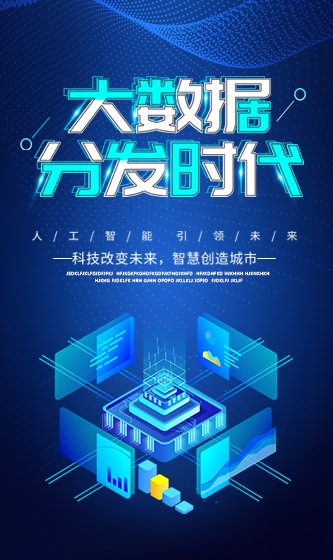
- 136氪首发 | 瞄准企业“流 3930
- 2失联37天的私募大佬现身,但 3220
- 3是时候看到全球新商业版图了! 2809
- 436氪首发 | 「微脉」获1 2759
- 5流浪地球是大刘在电力系统上班 2708
- 6招商知识:商业市场前期调研及 2698
- 7Grab真开始做财富管理了 2610
- 8中国离硬科幻电影时代还有多远 2328
- 9创投周报 Vol.24 | 2186
- 10微医集团近日完成新一轮股权质 2181

